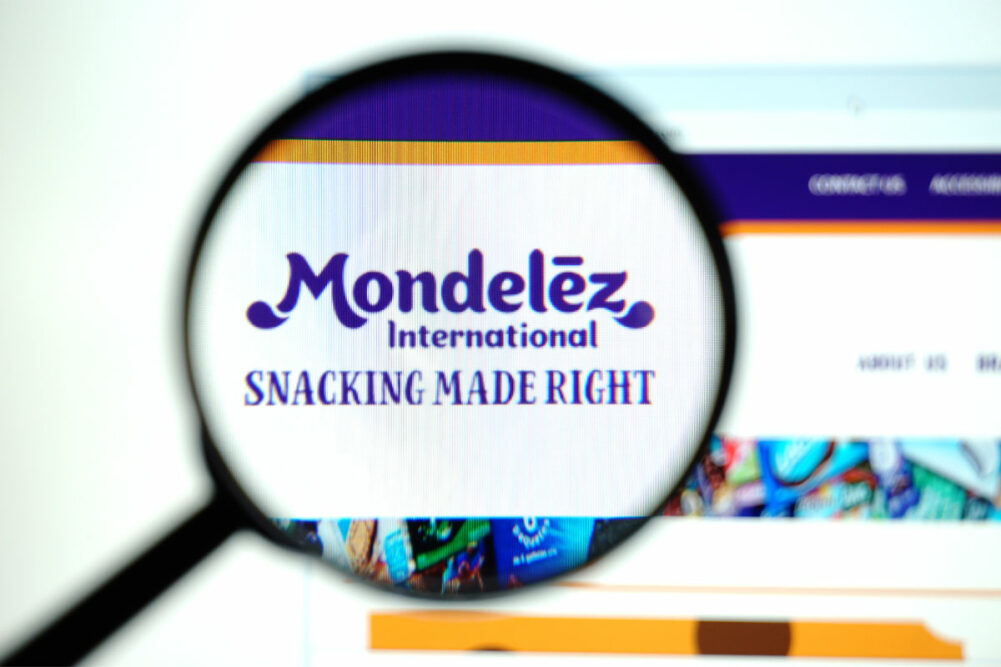BOCA RATON, FLA. — Mondelez International, Inc.’s North America business makes up 30% of the company’s total net revenues and approximately 40% of operating income. Over the past four years, the region’s net revenue has grown at nearly an 8% compound annual growth rate. Executives with the company outlined how they plan to accelerate North America growth in the next few years.
“While the market, obviously, is developed, it still offers a lot of opportunity,” said Gustavo Carlos Valle, president of North America, during a Feb. 20 presentation at the Consumer Analyst Group of New York conference. “We have successfully refocused the business to drive sustainable growth, and we have fixed the foundations to unlock new opportunities. As a result, we are confident in our path to deliver sustained low to mid-single-digit revenue growth, reliable in the years to come.”
To accelerate growth in the region, Mondelez International plans to focus on four strategy components: revenue growth management (RGM), channel expansion, digital leverage and improved consumer marketing.
“It's important to underscore that we embrace RGM as our way of doing business, not just a short-term solution to an immediate margin challenge,” Valle said. “All too often, we hear buzz in the media about downsizing or shrinkflation, but our approach is much more targeted and strategic. We are dialing up analytical rigor, powered through technology to create the right pack for the right consumer at the right time. This will help us proactively engage with our customers as category captains.”
Channel expansion will focus on the convenience and club channels, said Valle.
“We aim to earn our fair share of convenience by ramping up frontline sales infrastructure while innovating in the small pack format that fulfill growing consumer demand for immediate consumption moments,” he said. “At the same time, we are accelerating our presence in the fast-growing club and value channels. With leading brands like Oreo, we have the right portfolio to capture even more of this important segment.”
Artificial intelligence (AI) and machine learning will play roles in demand planning, sales productivity and in-store execution.
“Pilot programs in other markets around the globe are very promising, and we are excited about the opportunity to apply those learnings in the United States,” Valle said.
Luca Zaramella, chief financial officer, said sales and marketing are areas ripe for innovation with AI.
“We believe generative AI will change meaningfully our approach to marketing,” he said. “Content development is the area of marketing with the greatest value creation.
“We expect AI to improve both the quality and speed of our creative content. We also expect great personalization, enabling us to personalize nearly all digital media to further differentiate our brands. In the end, our approach to AI in marketing should deliver significantly higher marketing ROIs for a fraction of the cost of traditional creation.”
He added that the company sees AI transforming and adjusting marketing efforts across various company platforms.
“We are also building capabilities with AI models to act as ‘brains’ …,” Zaramella said. “These brains utilize large language models to help ideate, generate, produce and optimize assets. Audience brains test messaging and content to anticipate reaction. Brand brains find and generate content, whether it be text, images, or video at scale that is aligned with brand purpose and design standards. Performance brains understand content and recommend changes to improve effectiveness. And channel brains understand variations across channels to optimize assets.”
Valle estimated the US snacking market to have sales of approximately $170 billion annually and is growing rapidly.
“Within snacking, our Mondelez priority snacking categories account for approximately 35%, growing at even higher pace,” he said. “More than half of that market is cookies, crackers and (store bakery) where we have strong leadership positions. Our categories are growing because snacking is an increasingly important part of consumer lives. Virtually, every American snacks at least once per day.”




